- Home
- Aer-ki Jyr
Star Force: Origin Series Box Set (1-4) Page 10
Star Force: Origin Series Box Set (1-4) Read online
Page 10
Domination was the key to space travel, not pushing the limits…which was why Star Force hadn’t yet set foot on the Moon, let alone Mars. The US, China, and Russia all had small outposts on Luna, and the US had even established a temporary settlement on Mars for a few brief months, but what did it gain them other than notoriety? No country had yet begun to claim ‘lands’ yet, which was good for Star Force, because that monkey was going to drop on their back sooner or later, so what had the Americans’ and others’ efforts gained them?
Each and every Star Force endeavor advanced the company in some way, whether it be the establishment of another piece of infrastructure, like the construction of a starport, or a field test of new equipment, or even just flight training to raise the experience level of their pilots. As it was, Star Force had by far the most flight hours in space, and that was just racking up kilometers making routine cargo runs.
The Cougar-class starship was another good example of Star Force philosophy. It was on the small end of the fleet currently in service, but more massive than any non-Star Force ship. It had been designed with engines and fuel storage above and beyond what was needed for its mission parameters, armor plating more than sufficient to protect it against micrometeorites and radiation, maneuvering thrusters powerful and precise enough to make the ship dance if need be, and above all else artificial gravity, which the competition said was a waste of resources.
Davis knew it was an investment in the health of his people. Humans needed gravity, and going without it for a long period of time would leave a person weak and susceptible to illness. Gravity was like a constant workout for the body that people living on the surface took for granted. Take away that workout and most body functions diminished quickly from atrophy.
And while zero gravity was a big advantage of being in space, both from a tourist and industrial standpoint, Davis knew that the more time his people spent in artificial gravity the stronger and healthier they would be, which is why he decreed that all starships would be so equipped.
The pilots in the forward section of the ship were, however, still in zero gravity, but they spent most of their time in the rear sections keeping up to date with small forearm display screens that doubled as a basic instrument monitor. Aside from docking and course corrections, there wasn’t much point in being on the bridge, and had this been one of the larger starship designs, the bridge would actually have been located inside the gravity section, meaning that the crew could operate in full gravity the entire time.
The diameter of the Cougar was too small, however, to allow for a decent gravity bridge. The arc of the cylinder was too sharp and more accustomed to sitting down rather than walking about. The aesthetic designers for the ship interiors had laid down basic guidelines that the bridge should be as secure and stable a place as possible, and the gravity cylinder on the Cougar felt a bit like a carnival ride, thus the bridge had been placed in the forward zero gravity section.
Paul and the others, thanks to their special status, got to tour every inch of the ship’s interior during their long trip out to the station, including the bridge compartment. Again, there were no windows, but dozens of display screens imbedded in the walls that made it look as if he was standing inside the cockpit of the Millennium Falcon, affording the pilots a better view of the surrounding space than a window ever could.
In addition to the visuals, they also had radar and laser tracking systems tied into a 3d navigational matrix that served in lieu of a hologram, which Star Force techs still couldn’t figure out how to replicate from those in the pyramid in Antarctica. Each of the four bridge seats had its own set of displays and controls, though only two were routinely used. One other thing about Star Force protocol was redundancy, in both volume and function, to deal with unexpected problems if and when they arose.
After thoroughly inspecting both the forward and aft zero gravity sections, Paul eventually landed in the ‘lounge’ section of the starship, which was the second gravity cylinder. It had sparse, couch-like seating, entertainment screens, a small food station, and most importantly the restrooms. Paul had never liked the idea of using a zero gravity restroom, which the old time astronauts were forced to use and which was still employed on the competition’s small stations.
By decree from Davis early on, all Star Force ‘facilities’ had to be gravity based, a decision which Paul appreciated, and yet another mote of wisdom in the Conduit to Space in keeping the distance from spaceport to starport short, because the dropships were all zero gravity, and thus had no restrooms.
That was fine for short trips, much akin to his riding to distant track meets on his high school’s bus, but with an 18 hour trip out to the training station, Paul was thankful for Davis’s insistence that all starships have artificial gravity.
After another 20 minute deceleration burn, the Cougar slowly made its way to the D-4 station, which was an altogether different version from the starport. This station was much larger, and instead of having gravity cylinders it was equipped with gravity discs, two smashed flat on top of each other like pancakes and rotating in opposite directions inside a mutual casing, meaning that the rotation wasn’t visible from outside.
Six of those discs were visibly attached into a spine-like zero gravity section like CD cases being set into a vertical holder. The front half of the discs were visible, but the back half was sunk into the spine, which extended down further than there were discs. Paul knew that was because this type of station was expandable, with the possibility of adding on more discs and even more sections of ‘spine’ as necessity required, making it almost like a giant Lego set with no predetermined dimensions.
The docking area was on the far side of the spine, opposite the discs, with no other starships present on the four stubby pylons, widely spaced down the length of the station, capable of accommodating the largest of starships, as well as allowing for future designs of even greater size.
Paul and the others were called back to their seats and strapped in as the gravity cylinders slowly decelerated, returning the starship to full zero gravity to aid in the docking procedure. Once the hard dock was made, any additional internal movement could put additional stress on the small but firm tether resulting in sheering motion, thus all docked ships had to spin down before attaching…at least until the new docking collars were installed. Currently the stronger versions were still in the prototype phase, going through an extensive series of tests before being sanctioned for use in the field.
After unstrapping his duffle, Paul followed the attendant out of the ship and into the training station much as he’d done at the starport, except there were no civilians milling about, nor were there recreational facilities. The inside of the habitat was a long series of hallways connecting workrooms in a very Spartan design, only interrupted by emergency bulkheads that would auto-seal in case of an atmospheric breach so that the whole spine of the station wouldn’t vent out.
White illumination strips were everywhere, with colored ones popping up at random locations for direction and identification of particular sections of the station, which stood out in stark contrast to the otherwise snow-white demeanor of the design aesthetic.
The attendant’s dark blue uniform clashed with the environment, making her clearly visible against the environment as a white uniformed training officer met up with the group and took possession of the trainees.
“Quarters are this way,” he said with the usual formality. None of their trainers could ever be described as chatty.
The ten trainees followed the man down the spine until they came to the third disc transition station, which was essentially an elevator terminal that carried them along the inside of the disc case to the center of rotation. Once there, the elevator began to slowly rotate, matching the spin, then attached to the disc and opened its door.
Paul, Megan, and Brian floated out into the center of what looked like a hamster wheel slowly spinning around them, reaching for the ladder handholds on the walls and pulling the
ir feet onto the rungs while slipping their duffles over their shoulders. A tiny gravity pull resulted, which barely increased as they walked down the ladder to the floor of the hamster wheel, gently resting their feet on the grippy surface.
There was a doorway a quarter of the way around, which Paul gently walked toward, feeling like he was going to launch himself up with each step, but thanks to a wall railing he kept himself in place and exited the elevator terminal just as Jason, Kip, and Emily arrived behind them.
On the other side of the doorway was a claustrophobic staircase that led down to the first of the micro-gravity levels, which had the same basic geometry as the gravity cylinder in the Cougar they’d just arrived on. A few steps away was another elevator station, this with four units facing in on each other like you’d typically find in a skyscraper on Earth.
The trainer stood in the hallway and handed Paul a keycard. “Level 4, room 26,” he said, pointing to the elevators.
“Thanks,” Paul said, walking slowly with long gentle steps as Megan and Brian received their cards. He got to the first elevator and hit the call button, then waited for the others to catch up.
“This feels so weird,” Megan commented as the elevator door closed on the trio.
“But cool,” Brian added, grabbing the handrail as they suddenly felt the artificial gravity increasing as they moved farther ‘down’ and out on the spinning disc.
“It’s going to be hard to maneuver like this,” Paul commented, starting to feel his legs again. “Every twitch I make wants to send me flying into the ceiling.”
“It’ll certainly take some getting used to,” Brian commented.
“Which is why we’re here,” Megan reminded them as the elevator door opened and they walked out onto imperceptibly curved floors with normal gravity. “I don’t know about you two, but I’m gonna grab a hot show and take a long nap. Either one of you care to join me?”
“For which part?” Paul asked, knowing which she meant.
“The nap,” she said, giving him the evil eye. Her body temperature ran a predictable .8 degrees below normal and as a result she always complained of feeling cold, making either an electric blanket or snuggle-buddy her best friend while sleeping, the former of which she carried in her duffle.
“I’m not really feeling tired, so I’m going to explore a bit,” Paul said, shrugging in gentle apology.
“Alright vamp,” Brian said playfully, “I’ll let you suck up my body heat, but no tickling this time.”
Megan punched him in the shoulder none too gently in acceptance. She hated that nickname.
“Room 23,” she told him as she headed off down the hallway.
“When do you think we’re scheduled to begin?” Brian asked Paul as they waited for the others to catch up.
“They’ll probably give us a few hours at least to settle in,” he said as the elevator opened and three more of them walked out.
“8:00 am,” Jason answered, overhearing the last bit of their conversation. “Then we get to take a bite out of the 0s’ lead.”
“Let’s get to it,” Paul agreed, fist-bumping his teammate.
6
Adjusting to the zero gravity hadn’t been as hard as Paul had previously thought, but it was an odd set of motions to learn. Every movement he made had to be scaled down and he constantly had to be reaching for hand or footholds. There was no ‘standing’ still, because even when he nulled out his motion every twist of his neck or flick of his wrist would start him listing. In truth, he felt overpowered for the environment.
But fortunately the station’s designers had been wise enough to take this into consideration when laying out the interior. The more Paul looked around he realized that there were handlebars, rungs, indentations and edges everywhere, and once his eyes knew what to look for he began to develop a subconscious rhythm to his movements.
That rhythm was 80% arms, 15% twisting, and 5% legs…which was also odd to Paul because in gravity he did almost all his movement with his legs, but here they were almost a detriment to him unless he had a long span of clear hallway to shoot down, which he and the others had fun trying to get maximum speed and accuracy out of their ‘jumps.’
After a day of running through the zero gravity obstacle course set in the spine of the station, which ironically also looked like a kids’ playground, Paul and the others were brought into a completely empty room, ten times larger than anything else on the station. There were small handholds on the padded walls of the giant white cube, but nothing in the open airspace to latch onto.
Everywhere else on the station there were polls, grating, or even just wall protrusions extending out to avoid this type of open space, but here there was simply nothing to work with and Paul felt a sense of unease wash over him. Glancing at his teammates he saw similar concern on their faces.
Their lead trainer, named Gent, pushed off from the wall near the entrance and floated up towards the center of the gymnasium-sized room as one of his assistants toggled a wall-mounted control board, causing a thin rod to extend down from the ‘ceiling’ into the dead center of the chamber. Gent grabbed hold of it then hand-walked himself down to the nub. Once settled, the assistant retracted the pole, leaving Gent floating in the center of the room.
“You need to remember,” he began, making tiny hand movements to steady himself, “that every twitch you make has an effect. Even turning your head will cause you to rotate, so you need to be aware of everything you do before you do it. You also need to adjust to your environment…in this case, that means the air. You’re not free floating in vacuum, so you have some limited means of movement. Use it,” he said, beginning to ‘swim’ through the air.
He didn’t go far, but to Paul’s surprise Gent began moving, imperceptibly at first, then gaining speed as he traveled towards the wall. Above them on the ‘ceiling’ a clock started counting up from zero, timing the trainer. When he eventually made it to the wall he twisted about, grabbed a handhold, then walked his body down to the center and pressed a hidden button, stopping the clock at 48.2 seconds.
“How did you do that?” Jason asked in wonder.
Gent smiled cruelly. “Figure it out. 020, you’re up first.”
Jack nodded and waited for the stabilizing rod to extend, then, using the skills he’d practiced yesterday, leapt off the wall like a bullet and shot towards the center of the room. He missed slightly, but caught the rod with his arm. He steadied himself facing the wall next to the others.
“Wait for the signal to begin,” Gent said as the assistant retracted the rod. A moment later a chime sounded and Jack began swimming through the air much as he would have done in the water.
Problem was, he wasn’t going anywhere. Instead he was spinning about uncontrollably, every twist of his body enhancing the problem and making his movements more erratic.
“Null it out!” Emily shouted.
Taking her advice, Jack forgot any attempt at movement and curled up into a ball. He tried to analyze the direction he was spinning and reached his left arm out from his chest, then moved it to the left, slowing but not stopping his leftward spin. He continued for another minute, trying to move his hands sideways through the air, then turn them flat against the motion to try and steady himself, only minorly succeeding. When Gent finally ordered the stabilizer rod extended Jack was out of reach by a few inches, struggling with forced patience to swim his way to it.
Suddenly there was a blur in Paul’s peripheral vision as Megan leapt off the wall and flew towards Jack. She thumped him on the back as she passed, knocking him into reach of the rod while skewing her own trajectory. He got a handhold on the rod and she the far wall, then both pushed off to return to the group clinging to handholds near the corner entrance in the padded cube chamber.
“021,” Gent called out.
“Oh boy,” Randy said under his breath, launching himself off the wall towards the center point. He grabbed the rod and carefully steadied himself, nulling out as much micro-motion as he
possibly could before the rod retracted.
When the chime sounded he didn’t move at all. He just floated there, arms extended, studying his situation. After a long moment he reached both arms forward, much as the trainer had, then tipped the angle of his hands and brought them back along his sides trying to cup as much air with them as he could.
He moved forward immediately, but not from the air he was moving, but rather from the counterbalance of his swinging arms. However, when they reached the end of their swing, their momentum tugged on his body and nulled out his motion, with a slight lateral twist thrown in that frustrated Randy to no end. He tried again and again, but couldn’t manage any controlled movement, though he did succeed in accidentally drifting off the center point towards the far left wall.
After several minutes Gent looked at the other trainees. “Someone go get him,” he ordered.
“I’m next anyway,” Kip said, jumping off the wall and grabbing onto Randy’s arm as he passed, which pulled them both over to the far wall. Kip waited there until the rod was extended again, then floated over to the center point for his try, which ended up equally fruitless.
Emily came next, and started rotating around uncontrollably right from the start. She tried different arm movements, half steadying herself, but with each motion she made it seemed to send her on a slightly different trajectory than she’d expected, nulling out a twist but adding a corkscrew motion that either cart-wheeled her side to side or flipped her head over heels. Neither her arms nor her legs were attached to the center of her body, so creating straight lines of momentum was virtually impossible.
She tried the next best thing, doing the mental math and approximating the direction each twist would send her before she made it, but it was no use. No matter how close to neutral she got, she could never null it all out, let alone provide any thrust. Emily knew the key was in moving the air, but it was too thin to cup with her hands, though if she could smooth out her motion enough it should work at least a little bit, and with successive motions her momentum would build, but she couldn’t tell if she was making any progress or not without some point of reference. With the rod gone there was no way of knowing if she’d moved an inch forward or back, leaving her no way to measure the tiny movements that were plaguing her.

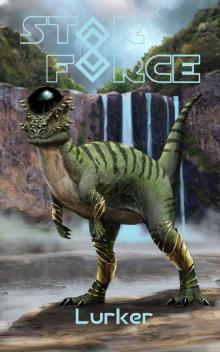 Lurker
Lurker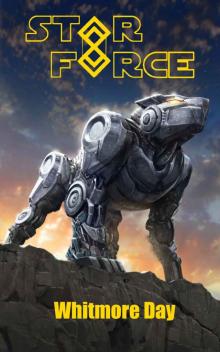 Whitmore Day
Whitmore Day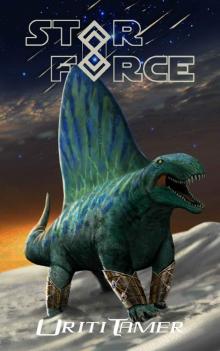 Uriti Tamer
Uriti Tamer The Powers That Be
The Powers That Be Star Force: Captains Mint (Star Force Universe Book 70)
Star Force: Captains Mint (Star Force Universe Book 70) Point Zero
Point Zero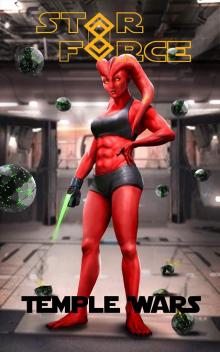 Star Force: Temple Wars
Star Force: Temple Wars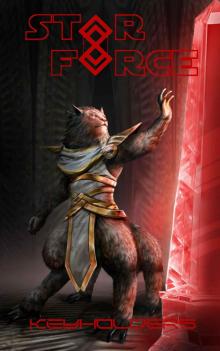 Star Force: Keyholders (Star Force Universe Book 61)
Star Force: Keyholders (Star Force Universe Book 61) Enlightenment
Enlightenment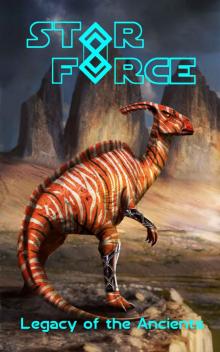 Star Force: Legacy of the Ancients (Star Force Universe Book 59)
Star Force: Legacy of the Ancients (Star Force Universe Book 59) First Contact Fallout
First Contact Fallout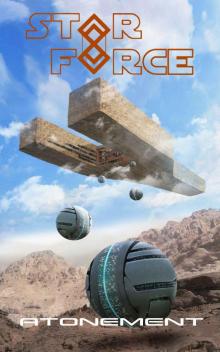 Star Force- Atonement
Star Force- Atonement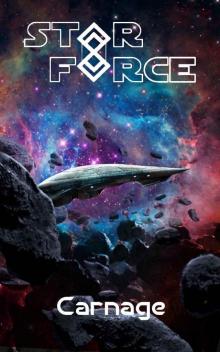 Carnage
Carnage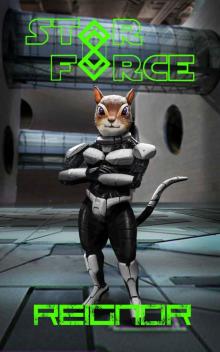 Reignor
Reignor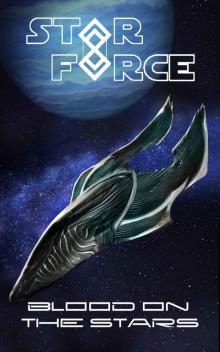 Blood on the Stars
Blood on the Stars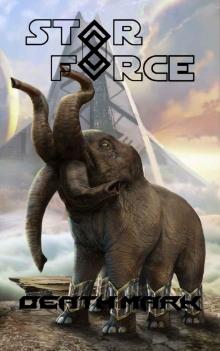 Star Force: Death Mark (Star Force Universe Book 67)
Star Force: Death Mark (Star Force Universe Book 67)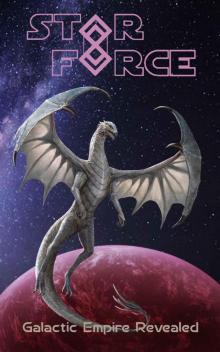 Star Force: Galactic Empire Revealed (Star Force Universe Book 63)
Star Force: Galactic Empire Revealed (Star Force Universe Book 63)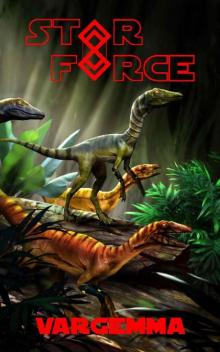 Vargemma
Vargemma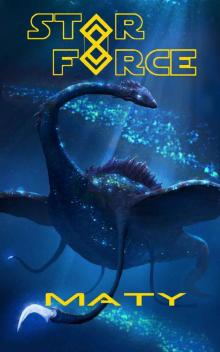 Maty
Maty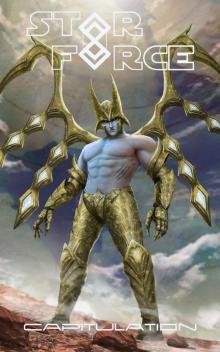 Star Force: Capitulation (Star Force Universe Book 73)
Star Force: Capitulation (Star Force Universe Book 73) Star Force: Phoenix (Star Force Universe Book 62)
Star Force: Phoenix (Star Force Universe Book 62)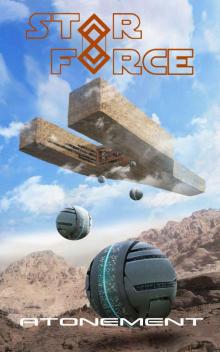 Star Force: Atonement (Star Force Universe Book 68)
Star Force: Atonement (Star Force Universe Book 68)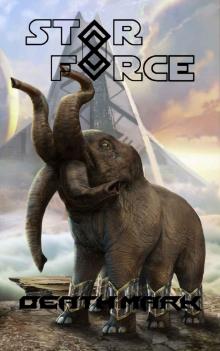 Death Mark
Death Mark Star Force: Penance (SF49)
Star Force: Penance (SF49) Star Force: Headstrong (SF72)
Star Force: Headstrong (SF72)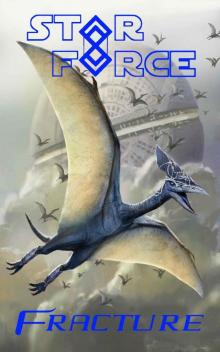 Star Force: Fracture (Star Force Universe Book 47)
Star Force: Fracture (Star Force Universe Book 47) Star Force: Eviction (SF33)
Star Force: Eviction (SF33) Star Force: Secession (SF13)
Star Force: Secession (SF13) Star Force: Termination (SF38)
Star Force: Termination (SF38) Star Force: Origin Series Box Set (1-4)
Star Force: Origin Series Box Set (1-4) Gateways
Gateways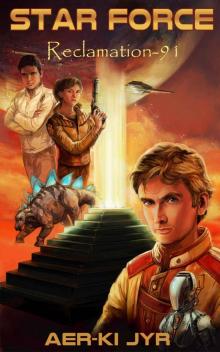 Star Force: Reclamation (SF91) (Star Force Origin Series)
Star Force: Reclamation (SF91) (Star Force Origin Series) Star Force: Excalibur (Star Force Universe Book 41)
Star Force: Excalibur (Star Force Universe Book 41)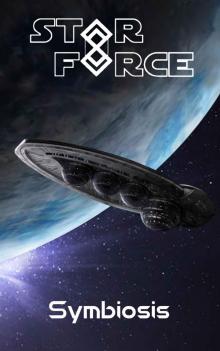 Star Force: Symbiosis (Star Force Universe Book 72)
Star Force: Symbiosis (Star Force Universe Book 72) Star Force: Origin Series Box Set (25-28)
Star Force: Origin Series Box Set (25-28)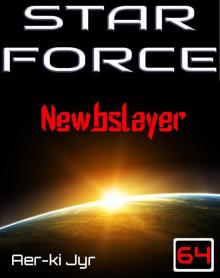 Star Force: Newbslayer (SF64)
Star Force: Newbslayer (SF64)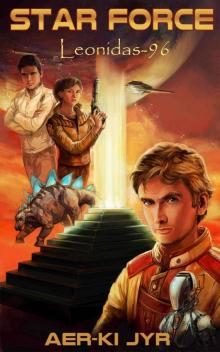 Star Force: Leonidas (SF96) (Star Force Origin Series)
Star Force: Leonidas (SF96) (Star Force Origin Series) Star Force: Origin Series Box Set (9-12)
Star Force: Origin Series Box Set (9-12)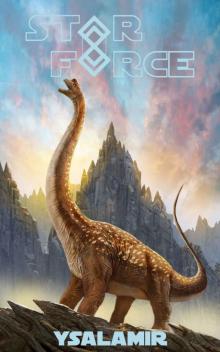 Star Force: Ysalamir (Star Force Universe Book 54)
Star Force: Ysalamir (Star Force Universe Book 54) Star Force: Starchaser (SF69)
Star Force: Starchaser (SF69) Star Force: Inception (SF1)
Star Force: Inception (SF1) Star Force: LITrpg (Star Force Universe Book 64)
Star Force: LITrpg (Star Force Universe Book 64) Star Force: Psionics (SF29)
Star Force: Psionics (SF29) Star Force: Essence (Star Force Universe Book 51)
Star Force: Essence (Star Force Universe Book 51)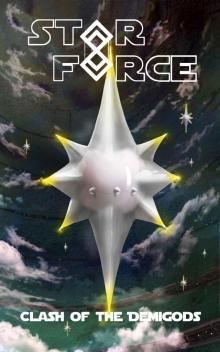 Star Force: Clash of the Demigods (Star Force Universe Book 60)
Star Force: Clash of the Demigods (Star Force Universe Book 60) Star Force: Zen'zat (SF14)
Star Force: Zen'zat (SF14) Star Force: Ice Queen
Star Force: Ice Queen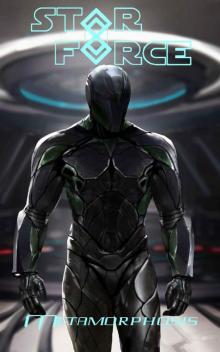 Metamorphosis
Metamorphosis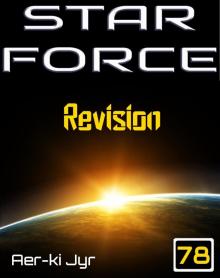 Star Force: Revision (SF78)
Star Force: Revision (SF78) Star Force: Recalibration (SF30)
Star Force: Recalibration (SF30)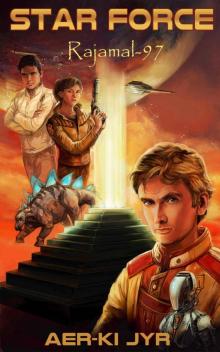 Star Force: Rajamal (SF97) (Star Force Origin Series)
Star Force: Rajamal (SF97) (Star Force Origin Series)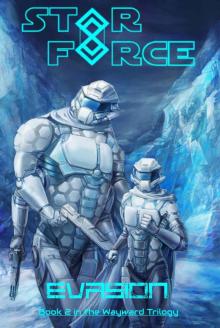 Star Force: Evasion (Wayward Trilogy Book 2)
Star Force: Evasion (Wayward Trilogy Book 2) Star Force: Mastermind (SF32)
Star Force: Mastermind (SF32) Star Force: Excursion (SF46)
Star Force: Excursion (SF46) Star Force: Deception (SF11)
Star Force: Deception (SF11) Star Force: Cascade (SF73)
Star Force: Cascade (SF73) Star Force Perseverance (SF81) (Star Force Origin Series)
Star Force Perseverance (SF81) (Star Force Origin Series)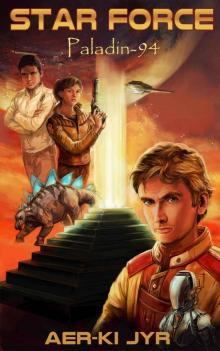 Star Force: Paladin (SF94) (Star Force Origin Series)
Star Force: Paladin (SF94) (Star Force Origin Series) Star Force: Revelation (SF79)
Star Force: Revelation (SF79) Star Force: Bloodlust (SF54)
Star Force: Bloodlust (SF54)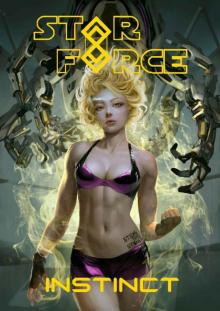 Star Force: Instinct (Star Force Universe Book 49)
Star Force: Instinct (Star Force Universe Book 49) Star Force: Intimidation (SF17)
Star Force: Intimidation (SF17)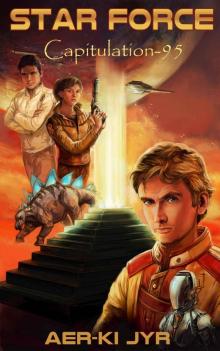 Star Force: Capitulation (SF95) (Star Force Origin Series)
Star Force: Capitulation (SF95) (Star Force Origin Series)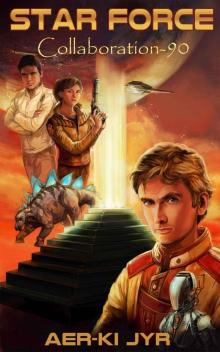 Star Force: Collaboration (SF90) (Star Force Origin Series)
Star Force: Collaboration (SF90) (Star Force Origin Series)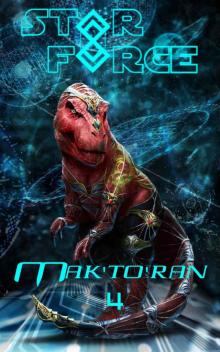 Star Force: Mak'to'ran (4)
Star Force: Mak'to'ran (4) Star Force: Unification (SF39)
Star Force: Unification (SF39) Star Force: Origin Series Box Set (37-40)
Star Force: Origin Series Box Set (37-40) Star Force: Fabrication (SF7)
Star Force: Fabrication (SF7) Star Force: Marauders (SF63)
Star Force: Marauders (SF63) Star Force: Ringworld (SF80)
Star Force: Ringworld (SF80) Star Force: Earth Evacuation
Star Force: Earth Evacuation Star Force: Nemesis (SF3)
Star Force: Nemesis (SF3) Star Force: Ambrosia (SF6)
Star Force: Ambrosia (SF6)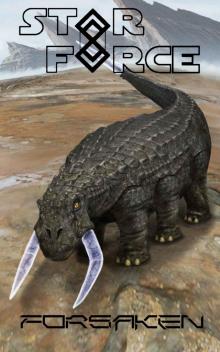 Star Force_Forsaken
Star Force_Forsaken Star Force: Return to Earth
Star Force: Return to Earth Star Force: Knighthood (SF36)
Star Force: Knighthood (SF36) Star Force: Bahamut (SF86) (Star Force Origin Series)
Star Force: Bahamut (SF86) (Star Force Origin Series) Star Force: Integration (SF2)
Star Force: Integration (SF2) Star Force: Benefactor (SF19)
Star Force: Benefactor (SF19) Star Force: Revulsion (SF70)
Star Force: Revulsion (SF70) Star Force: Divide (SF76) (Star Force Origin Series)
Star Force: Divide (SF76) (Star Force Origin Series)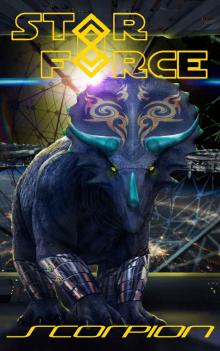 Star Force: Scorpion (Star Force Universe Book 42)
Star Force: Scorpion (Star Force Universe Book 42) Star Force: Extirpation (Star Force Universe Book 56)
Star Force: Extirpation (Star Force Universe Book 56)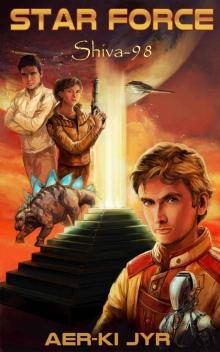 Star Force: Shiva (SF98) (Star Force Origin Series)
Star Force: Shiva (SF98) (Star Force Origin Series) Star Force: Origin Series Box Set (5-8)
Star Force: Origin Series Box Set (5-8) Star Force: Disarmament (SF10)
Star Force: Disarmament (SF10) Star Force: Escalation (SF12)
Star Force: Escalation (SF12) Star Force: Nexus (SF57)
Star Force: Nexus (SF57) Star Force: Gemini (SF5)
Star Force: Gemini (SF5)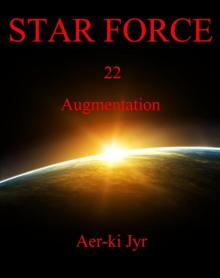 Star Force: Augmentation (SF22)
Star Force: Augmentation (SF22) Star Force: Mettle (SF9)
Star Force: Mettle (SF9) Star Force: Rammus (SF83) (Star Force Origin Series)
Star Force: Rammus (SF83) (Star Force Origin Series)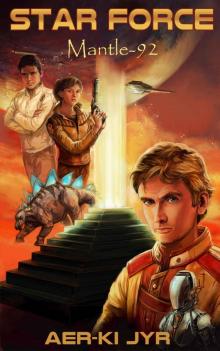 Star Force: Mantle (SF92) (Star Force Origin Series)
Star Force: Mantle (SF92) (Star Force Origin Series) Star Force: Perquisition
Star Force: Perquisition Star Force: Upgrades (SF41)
Star Force: Upgrades (SF41) Star Force: Rift
Star Force: Rift Star Force: Mak'to'ran (5)
Star Force: Mak'to'ran (5) Star Force: Consensus (SF43)
Star Force: Consensus (SF43) Star Force: Ascension (SF27)
Star Force: Ascension (SF27) Star Force: Axius (SF47)
Star Force: Axius (SF47) Star Force: Canderous (SF16)
Star Force: Canderous (SF16) Star Force: Insurrection (SF28)
Star Force: Insurrection (SF28)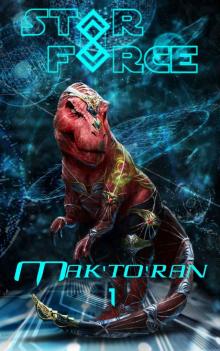 Star Force: Mak'to'ran (1)
Star Force: Mak'to'ran (1) Star Force: Backstab (SF23)
Star Force: Backstab (SF23) Star Force: Hamoriti (SF62)
Star Force: Hamoriti (SF62) Star Force: Flashpoint (SF8)
Star Force: Flashpoint (SF8) Star Force: Aquatics (SF31)
Star Force: Aquatics (SF31)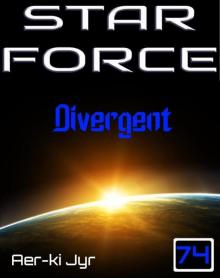 Star Force: Divergent (SF74)
Star Force: Divergent (SF74) Star Force: Origin (SF24)
Star Force: Origin (SF24) Star Force 75: Resistance
Star Force 75: Resistance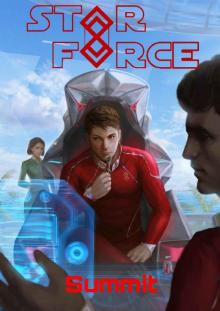 Star Force: Summit (Star Force Universe Book 44)
Star Force: Summit (Star Force Universe Book 44)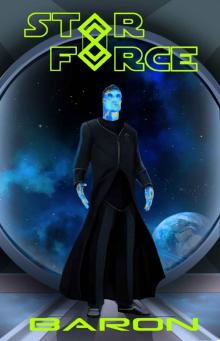 Star Force: Baron (Star Force Universe Book 43)
Star Force: Baron (Star Force Universe Book 43)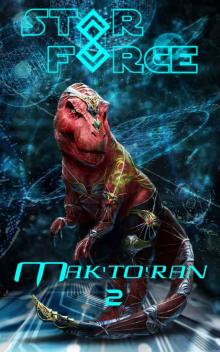 Star Force: Mak'to'ran (2)
Star Force: Mak'to'ran (2) Star Force: Trials (SF68)
Star Force: Trials (SF68) Star Force: Origin Series Box Set (13-16)
Star Force: Origin Series Box Set (13-16)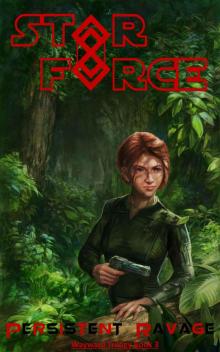 Star Force: Persistent Ravage (Wayward Trilogy Book 3)
Star Force: Persistent Ravage (Wayward Trilogy Book 3)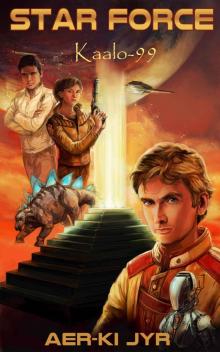 Star Force: Kaalo (SF99) (Star Force Origin Series)
Star Force: Kaalo (SF99) (Star Force Origin Series) Star Force: Counterstrike (SF18)
Star Force: Counterstrike (SF18) Star Force: Foothold (SF25)
Star Force: Foothold (SF25)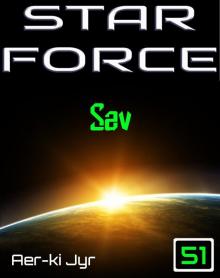 Star Force: Sav (SF51)
Star Force: Sav (SF51) Star Force: Veracious (SF48)
Star Force: Veracious (SF48) Star Force: Allegiance (SF21)
Star Force: Allegiance (SF21) Star Force: Resistance (SF75)
Star Force: Resistance (SF75) Star Force: Deceit (SF34)
Star Force: Deceit (SF34) Star Force: Lost Destiny (Wayward Trilogy Book 1)
Star Force: Lost Destiny (Wayward Trilogy Book 1) Star Force: Melee (SF20)
Star Force: Melee (SF20)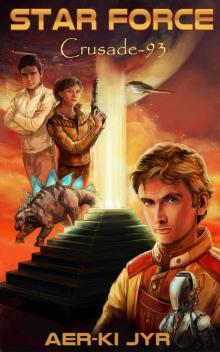 Star Force: Crusade (SF93) (Star Force Origin Series)
Star Force: Crusade (SF93) (Star Force Origin Series) Star Force: Scruples (SF37)
Star Force: Scruples (SF37) Star Force: Trailblazer (SF4)
Star Force: Trailblazer (SF4) Star Force: Commando (SF40)
Star Force: Commando (SF40) Star Force: Retribution (SF60)
Star Force: Retribution (SF60) Star Force: Relocation (SF44)
Star Force: Relocation (SF44)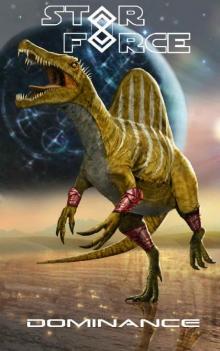 Star Force: Dominance (Star Force Universe Book 50)
Star Force: Dominance (Star Force Universe Book 50) Star Force: Death Knell (SF26)
Star Force: Death Knell (SF26) Apex
Apex Star Force: Paradigm (SF35)
Star Force: Paradigm (SF35) Star Force: Origin Series (17-20)
Star Force: Origin Series (17-20) Star Force: Mak'to'ran (3)
Star Force: Mak'to'ran (3) Star Force: Colonization (SF15)
Star Force: Colonization (SF15) Star Force: Battlemeld (SF45)
Star Force: Battlemeld (SF45)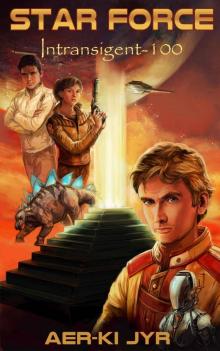 Star Force: Intransigent (SF100) (Star Force Origin Series)
Star Force: Intransigent (SF100) (Star Force Origin Series) Star Force: Shame (SF59)
Star Force: Shame (SF59) Star Force: Origin Series Box Set (33-36)
Star Force: Origin Series Box Set (33-36)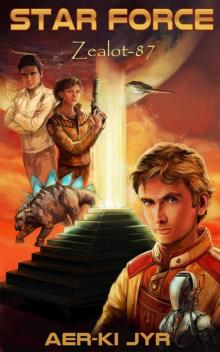 Star Force: Zealot (SF87) (Star Force Origin Series)
Star Force: Zealot (SF87) (Star Force Origin Series)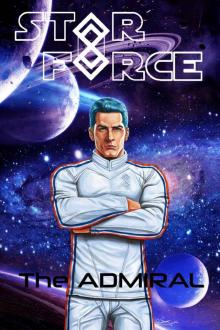 Star Force: The Admiral
Star Force: The Admiral Star Force: Empire (SF58)
Star Force: Empire (SF58) Star Force: Origin Series Box Set (29-32)
Star Force: Origin Series Box Set (29-32) Star Force 82 Hradeiti (SF82) (Star Force Origin Series)
Star Force 82 Hradeiti (SF82) (Star Force Origin Series) Star Force: Forsaken (Star Force Universe Book 48)
Star Force: Forsaken (Star Force Universe Book 48) Star Force: Origin Series Box Set (21-24)
Star Force: Origin Series Box Set (21-24) Star Force: Resurrection (SF84) (Star Force Origin Series)
Star Force: Resurrection (SF84) (Star Force Origin Series)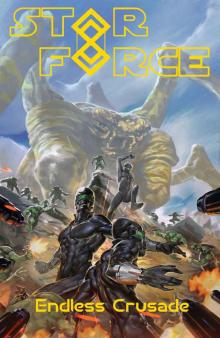 Star Force: Endless Crusade
Star Force: Endless Crusade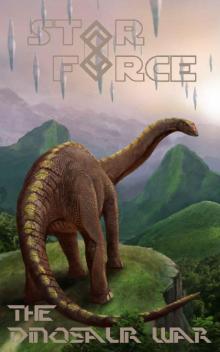 Star Force: The Dinosaur War (Star Force Universe Book 45)
Star Force: The Dinosaur War (Star Force Universe Book 45)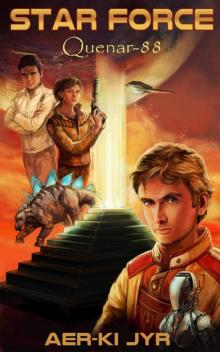 Star Force: Quenar (SF88) (Star Force Origin Series)
Star Force: Quenar (SF88) (Star Force Origin Series) Star Force: Intellect (SF85) (Star Force Origin Series)
Star Force: Intellect (SF85) (Star Force Origin Series)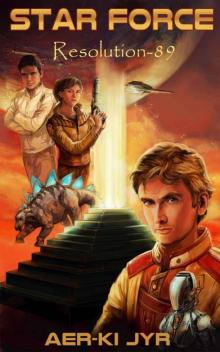 Star Force: Resolution (SF89) (Star Force Origin Series)
Star Force: Resolution (SF89) (Star Force Origin Series) Star Force: Probe (SF42)
Star Force: Probe (SF42)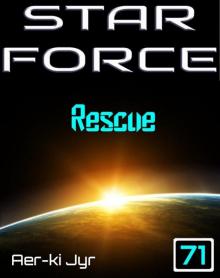 Star Force: Rescue (SF71)
Star Force: Rescue (SF71) Star Force: Evacuation (SF50)
Star Force: Evacuation (SF50) Star Force: Survivor (SF52)
Star Force: Survivor (SF52)